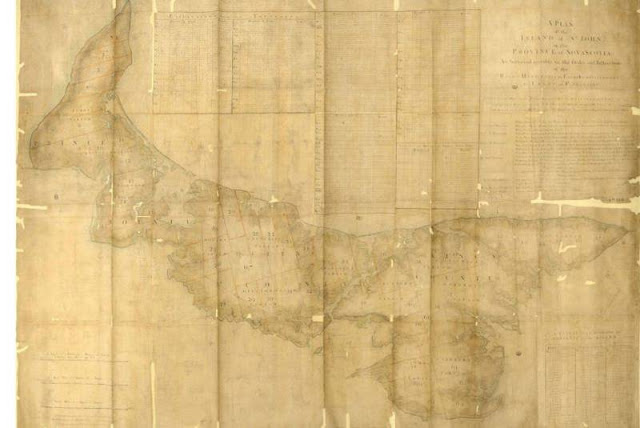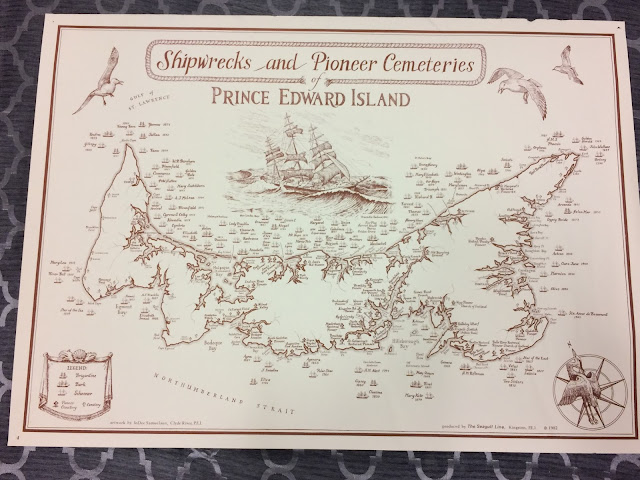The Giant Lottery that Gave Away PEI
When PEI was ceded to the British in 1763 in the Treaty of Paris they were left with a difficult decision, how should they divide the Island up, who should get the land?
A giant lottery was what was decided on.
In 1763, Britain knew there were good fishing areas around the Island, but not much about the other resources. But, considering how many requests for land King George III received immediately after the Treaty was signed, people were clearly willing to take a gamble!
Some of the proposals King George received were, interesting, to say the least.
The Proposal of John Perceval, the Earl of Edgemont
In December 1763, John Perceval, the Earl of Edgemont, submitted an interesting, and somewhat convoluted, plan. So I will try to explain it as clearly as I can.
Perceval proposed the entire Island be granted to him. From there, he would divide the Island into fifty equal portions. Of these fifty portions, forty would be given to important men who would be given the title of lord and would pay an annual rent to Perceval.
The lords would then divide their portions into twenty manors. Each manor would be comprised of 2,000 acres. The lords of each manor would pay the lord above them in this hierarchy and then further divide the land. These tenants would then pay the manor lords.
So the tenants would pay the manor lords - the manor lords would pay the section lords - the section lords would pay Perceval - Perceval would pay the crown.
According to this plan, the Island would have:
The Lottery
In many Lots, the Crown kept a 500-acre wide track of land and reserved it for the fishery. Land in each Lot also had to be set aside for schools and a church.
However, not all Lots were included in the Lottery. Lots 64, 66, and 67 were kept by the Crown.
A giant lottery was what was decided on.
In 1763, Britain knew there were good fishing areas around the Island, but not much about the other resources. But, considering how many requests for land King George III received immediately after the Treaty was signed, people were clearly willing to take a gamble!
Some of the proposals King George received were, interesting, to say the least.
The Proposal of John Perceval, the Earl of Edgemont
In December 1763, John Perceval, the Earl of Edgemont, submitted an interesting, and somewhat convoluted, plan. So I will try to explain it as clearly as I can.
Perceval proposed the entire Island be granted to him. From there, he would divide the Island into fifty equal portions. Of these fifty portions, forty would be given to important men who would be given the title of lord and would pay an annual rent to Perceval.
The lords would then divide their portions into twenty manors. Each manor would be comprised of 2,000 acres. The lords of each manor would pay the lord above them in this hierarchy and then further divide the land. These tenants would then pay the manor lords.
So the tenants would pay the manor lords - the manor lords would pay the section lords - the section lords would pay Perceval - Perceval would pay the crown.
According to this plan, the Island would have:
- one county town (one main town per county)
- forty market towns
- four hundred villages
- one large castle, protected by cannons
This plan was rejected.
Mapping PEI
King George decided he needed to know what was on PEI before he figured out how to divide the land. So in 1764, he commissioned Samuel Holland to survey St. John's Island (PEI), Cape Breton, and the Magdalene Islands.
He arrived on the Island in October to begin his survey. Not exactly the best time given his, and his men's, inexperience with Canadian winters. Holland divided his men into groups of five and had them survey the Island. Unfortunately, their inexperience with Canadian winters meant many got frostbite despite their toboggans being loaded with warm coats and blankets.
Holland divided the Island up into 67 lots and divided the Island into three counties, Kings, Queens, and Prince. In his report, he even included the sites of towns and the capital, Charlotte Town, which he named after King George's wife. Of course, he also included a detailed account of the resources and wildlife on the Island.
In 1765, Holland explained why he chose certain locations for townships,
"In most parts of the island the Sarsaparilla Root is in great abundance, and very good. The Mountain Shrub and Maiden Hair are also pretty common, of whose leaves and berries the Acadian settlers frequently make a kind of tea. The ground is in general covered with strawberries and cranberries, in their different seasons, which are very good...Port la Joie, Cardigan and Richmond Bays are without dispute the only places where ships of burthen can safely enter, and consequently most proper to erect the principal towns and settlements upon."
 |
| Image of the original Samuel Holland map when it was in PEI on loan from the National Archives, UK (Image Credit: The Guardian) |
The Lottery
In the end, King George decided to give the land away in a lottery.
Random lords were not chosen to take part in the lottery. The lords had to apply and explain why they deserved to be in the lottery and be interviewed. About 100 of the applicants were chosen to take part.
On July 23, 1767, each approved applicant had their name written on a piece of paper and placed in a box for the draw. The first name drawn received Lot 1, the second received Lot 2, and so on. Approximately 1.4 million acres were given away during this one-day lottery!
In many Lots, the Crown kept a 500-acre wide track of land and reserved it for the fishery. Land in each Lot also had to be set aside for schools and a church.
However, not all Lots were included in the Lottery. Lots 64, 66, and 67 were kept by the Crown.
Lots 40 and 59 were also not given away as they were given to merchants prior to the lottery.
Lot 28 was awarded to Samuel Holland. He was added to the lottery as a reward for his work.
 |
| The Lots of PEI (Image Credit: Island Register) |
As I discussed in PEI, the Absentee Landlords, the Tenant League, there were certain obligations these landlords were supposed to meet. These obligations included paying quit-rents to the Crown, at least a third of the land was to be settled with Protestants, and they had to reserve land for a school and schoolmaster.
The quit-rents helped pay for the construction of roads and jails; and supply the salaries for judges, sheriffs, and politicians. The more valuable the land the higher the quit-rent. Their inability to meet these obligations and other issues led to the PEI Land Question, which is discussed in the blog post mentioned earlier.
Interestingly, John Percival, the Earl of Edgemont, was offered a Parish, but he felt it would be insufficient for his plans.
If you are interested in finding out which Lot you grew up in or are living in, the Island Register has a list, available here.
I want to thank you all for supporting my blog! This week is a little shorter as I am very busy with work.
If you liked this post, please share!
Sources:
Baldwin, D. Prince Edward Island: An Illustrated History. Halifax: Nimbus Publishing, 2009.
If you liked this post, please share!
Sources:
Baldwin, D. Prince Edward Island: An Illustrated History. Halifax: Nimbus Publishing, 2009.


Comments
Post a Comment